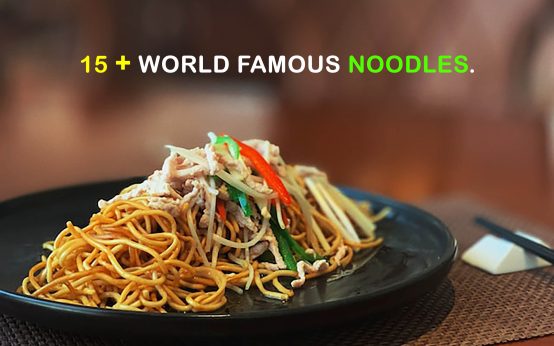Overview.
Tomato sauce is a kitchen staple, a versatile ingredient that adds flavor and depth to a myriad of dishes. Whether you’re a seasoned cook or a kitchen novice, mastering the art of tomato sauce can elevate your culinary creations. In this comprehensive guide, we’ll delve into everything you need to know about tomato sauce, from its history and varieties to step-by-step recipes and expert tips.
The History of Tomato Sauce.
Tomato sauce has a rich history that dates back centuries. Originating in Mesoamerica, tomatoes were cultivated by the Aztecs and Mayans long before they made their way to Europe. When Spanish explorers brought tomatoes back to the Old World, it took time for Europeans to embrace this new fruit. Initially met with suspicion, tomatoes eventually became a beloved ingredient, particularly in Italian cuisine.
The evolution of tomato sauce has been influenced by various cultures. Italian cuisine, for instance, has multiple regional variations of tomato sauce, each with its unique twist. From the simple marinara to the robust Bolognese, tomato sauce has become a fundamental component of many dishes worldwide.
Types of Tomato Sauce.
Tomato sauce comes in many forms, each suited to different culinary applications. Here are some of the most popular types:
Classic Marinara.
A simple and straightforward sauce made with tomatoes, garlic, onions, and herbs. It’s the perfect base for pasta dishes and pizza.
Bolognese.
A hearty meat-based sauce that combines ground beef or pork with tomatoes, wine, and aromatic vegetables. It’s ideal for lasagna or served over pappardelle.
Arrabbiata.
This spicy sauce features tomatoes, garlic, and red chili peppers. It’s a great option for those who enjoy a bit of heat in their meals.
Puttanesca.
A flavorful sauce made with tomatoes, olives, capers, and anchovies. It’s known for its bold and salty taste.
Vodka Sauce.
A creamy sauce that combines tomatoes with heavy cream and a splash of vodka, resulting in a rich and smooth texture.

Ingredients for Tomato Sauce.
Essential Ingredients.
- Tomatoes: The star of the sauce, providing the base flavor and texture.
- Garlic: Adds depth and aromatic notes.
- Onions: Contributes sweetness and complexity.
- Olive oil: Enhances the richness of the sauce.
- Herbs and Spices: Basil, oregano, thyme, and bay leaves are commonly used.
Fresh vs. Canned Tomatoes.
Both fresh and canned tomatoes can be used to make tomato sauce. Fresh tomatoes offer a vibrant flavor, especially during peak season. Canned tomatoes, however, are convenient and often provide consistent quality year-round.
Herbs and Spices.
The choice of herbs and spices can significantly impact the flavor of your sauce. Basil and oregano are classic choices, but feel free to experiment with thyme, rosemary, or even a pinch of red pepper flakes for heat.
Variations and Additions.
Consider adding ingredients like red wine, balsamic vinegar, or sugar to balance acidity. For a heartier sauce, incorporate vegetables like bell peppers, carrots, or mushrooms.
Equipment Needed for Tomato Sauce.
Pots and Pans.
A heavy-bottomed pot or Dutch oven is ideal for making tomato sauce. It ensures even heat distribution and prevents the sauce from burning.
Utensils.
You’ll need a good wooden spoon for stirring, a sharp knife for chopping, and a fine grater for Parmesan cheese.
Blenders and Food Processors.
For a smoother sauce, use an immersion blender or a countertop blender. A food processor can also help achieve the desired texture.
Basic Tomato Sauce Recipe.
Step-by-Step Instructions.
- Prepare the ingredients: Chop onions, mince garlic, and have your tomatoes ready.
- Sauté the aromatics: In a large pot, heat olive oil and sauté onions and garlic until fragrant.
- Add tomatoes: Stir in chopped fresh or canned tomatoes.
- Simmer: Let the sauce simmer on low heat for at least 30 minutes, stirring occasionally.
- Season: Add herbs, salt, and pepper to taste.
- Blend: For a smoother consistency, blend the sauce using an immersion blender.
Tips for Perfecting the Sauce.
- Low and slow: Simmering the sauce slowly helps develop the flavors.
- Taste as you go: Adjust seasoning gradually to avoid over-salting.
- Fresh herbs: Add fresh herbs at the end of cooking for a burst of flavor.
Common Mistakes to Avoid.
- Overcooking: Can make the sauce bitter.
- Undercooking: Results in a raw, harsh flavor.
- Incorrect seasoning: Always taste and adjust as needed.
Classic Marinara Sauce.
Ingredients.
- 2 cups of fresh or canned tomatoes.
- 2 cloves of garlic, minced.
- 1 small onion, finely chopped.
- 2 tablespoons olive oil.
- Salt and pepper to taste.
- Fresh basil leaves.
Preparation.
- Sauté garlic and onion: Heat olive oil in a pot, add garlic and onion, and cook until softened.
- Add tomatoes: Stir in the tomatoes and bring to a simmer.
- Season: Add salt, pepper, and basil leaves.
- Simmer: Let the sauce cook for about 20 minutes, stirring occasionally.
Serving Suggestions.
Serve marinara sauce over pasta, as a base for pizza, or with meatballs.
Hearty Bolognese Sauce.
Ingredients.
- 1 pound ground beef or pork.
- 2 cups of tomatoes.
- 1 onion, chopped.
- 2 cloves of garlic, minced.
- 1 carrot, finely chopped.
- 1 celery stalk, finely chopped.
- 1/2 cup red wine.
- Salt and pepper to taste.
- Olive oil.
Preparation.
- Brown the meat: In a large pot, heat olive oil and brown the ground meat.
- Sauté vegetables: Add onions, garlic, carrot, and celery, and cook until softened.
- Deglaze with wine: Pour in the red wine and let it reduce.
- Add tomatoes: Stir in the tomatoes and season with salt and pepper.
- Simmer: Let the sauce cook on low heat for at least an hour.
Serving Suggestions.
Bolognese sauce is perfect for lasagna or served over wide pasta noodles like pappardelle.
Spicy Arrabbiata Sauce.
Ingredients.
- 2 cups of tomatoes.
- 3 cloves of garlic, minced.
- 2 tablespoons olive oil.
- 1 teaspoon red chili flakes.
- Salt and pepper to taste.
- Fresh parsley.
Preparation.
- Sauté garlic: In a pot, heat olive oil and sauté garlic until golden.
- Add chili flakes: Stir in the red chili flakes and cook for another minute.
- Add tomatoes: Pour in the tomatoes and bring to a simmer.
- Season: Add salt, pepper, and fresh parsley.
- Simmer: Let the sauce cook for 20-30 minutes.
Serving Suggestions.
Serve Arrabbiata sauce over penne pasta or use it as a dipping sauce for bread.
Flavorful Puttanesca Sauce.
Ingredients.
- 2 cups of tomatoes.
- 2 cloves of garlic, minced.
- 4 anchovy fillets.
- 1/2 cup black olives, sliced.
- 2 tablespoons capers.
- Olive oil.
- Red pepper flakes.
- Fresh parsley.
Preparation.
- Sauté garlic and anchovies: In a pot, heat olive oil and sauté garlic and anchovies until fragrant.
- Add olives and capers: Stir in the olives and capers.
- Add tomatoes: Pour in the tomatoes and bring to a simmer.
- Season: Add red pepper flakes, salt, and pepper to taste.
- Simmer: Let the sauce cook for 20-30 minutes.
Serving Suggestions.
Puttanesca sauce pairs well with spaghetti and can be garnished with fresh parsley.
Creamy Vodka Sauce.
Ingredients.
- 2 cups of tomatoes.
- 1/2 cup heavy cream.
- 1/4 cup vodka.
- 2 cloves of garlic, minced.
- Olive oil.
- Salt and pepper.
- Fresh basil.
Preparation.
- Sauté garlic: In a pot, heat olive oil and sauté garlic until golden.
- Add vodka: Pour in the vodka and let it reduce by half.
- Add tomatoes: Stir in the tomatoes and bring to a simmer.
- Add cream: Pour in the heavy cream and mix well.
- Season: Add salt, pepper, and fresh basil.
- Simmer: Let the sauce cook for 20 minutes.
Serving Suggestions.
Vodka sauce is delicious over penne pasta, garnished with fresh basil and grated Parmesan cheese.
Tips for Making the Perfect Tomato Sauce.
Choosing the Right Tomatoes.
Opt for ripe, juicy tomatoes. Roma tomatoes are a popular choice due to their low moisture content and rich flavor.
Balancing Acidity.
If your sauce is too acidic, add a pinch of sugar or a splash of balsamic vinegar to balance it out.
Enhancing Flavor.
Roast your tomatoes before adding them to the sauce for a deeper, more intense flavor. Fresh herbs added at the end of cooking can also elevate the taste.
Common Mistakes and How to Avoid Them.
Overcooking.
Overcooking can lead to a bitter, burnt flavor. Keep an eye on your sauce and stir frequently.
Undercooking.
Undercooked sauce can taste raw and harsh. Ensure you cook it long enough for the flavors to meld.
Incorrect Seasoning.
Taste as you cook and adjust seasoning gradually to avoid over-salting or under-seasoning your sauce.
Storing and Preserving Tomato Sauce.
Refrigeration Tips.
Store your sauce in airtight containers in the refrigerator for up to a week.
Freezing Instructions.
Tomato sauce freezes well. Divide it into portion-sized containers and freeze for up to three months.
Canning Techniques.
For long-term storage, consider canning your tomato sauce. Follow proper canning procedures to ensure safety and preserve flavor.
Creative Uses for Tomato Sauce.
Pasta Dishes.
Tomato sauce is a classic accompaniment to pasta. Try it with spaghetti, penne, or any pasta shape you prefer.
Pizza.
Use tomato sauce as the base for your homemade pizza. Add your favorite toppings and bake until bubbly and golden.
Soups and Stews.
Incorporate tomato sauce into soups and stews for added depth and richness.
Shakshuka.
Make a Middle Eastern-inspired dish by poaching eggs in a spicy tomato sauce with bell peppers and onions.

Health Benefits of Tomato Sauce.
Nutritional Value.
Tomato sauce is low in calories and fat while being rich in vitamins and minerals.
Antioxidants.
Tomatoes are packed with antioxidants like lycopene, which can help reduce the risk of chronic diseases.
Vitamins and Minerals.
Tomato sauce provides a good source of vitamins A and C, potassium, and folate.
Vegan and Gluten-Free Tomato Sauce Options.
Substitutions and Alternatives.
For a vegan sauce, omit any animal-based ingredients like meat or cheese. Use gluten-free pasta to keep the dish gluten-free.
Recipe Modifications.
You can adapt any tomato sauce recipe to suit vegan or gluten-free diets by using plant-based and gluten-free ingredients.
Frequently Asked Questions About Tomato Sauce.
What type of tomatoes are best for making tomato sauce?
- Roma tomatoes are ideal due to their low moisture content and rich flavor, but any ripe, juicy tomatoes will work.
Can I use fresh tomatoes instead of canned tomatoes?
- Yes, fresh tomatoes can be used. Blanch and peel them before using for a smoother texture.
How can I make my tomato sauce less acidic?
- Add a pinch of sugar or a splash of balsamic vinegar to balance the acidity.
Can I freeze tomato sauce?
- Yes, tomato sauce freezes well. Store it in portion-sized containers and freeze for up to three months.
How long does homemade tomato sauce last in the refrigerator?
- Homemade tomato sauce can last up to a week in the refrigerator when stored in airtight containers.
Is tomato sauce healthy?
- Yes, tomato sauce is low in calories and fat while being rich in vitamins, minerals, and antioxidants like lycopene.



 Hot Dogs: The Best Adventure of Savory Delights.
Hot Dogs: The Best Adventure of Savory Delights.  Top 15 Plus Famous Noodles Dishes in The World.
Top 15 Plus Famous Noodles Dishes in The World.